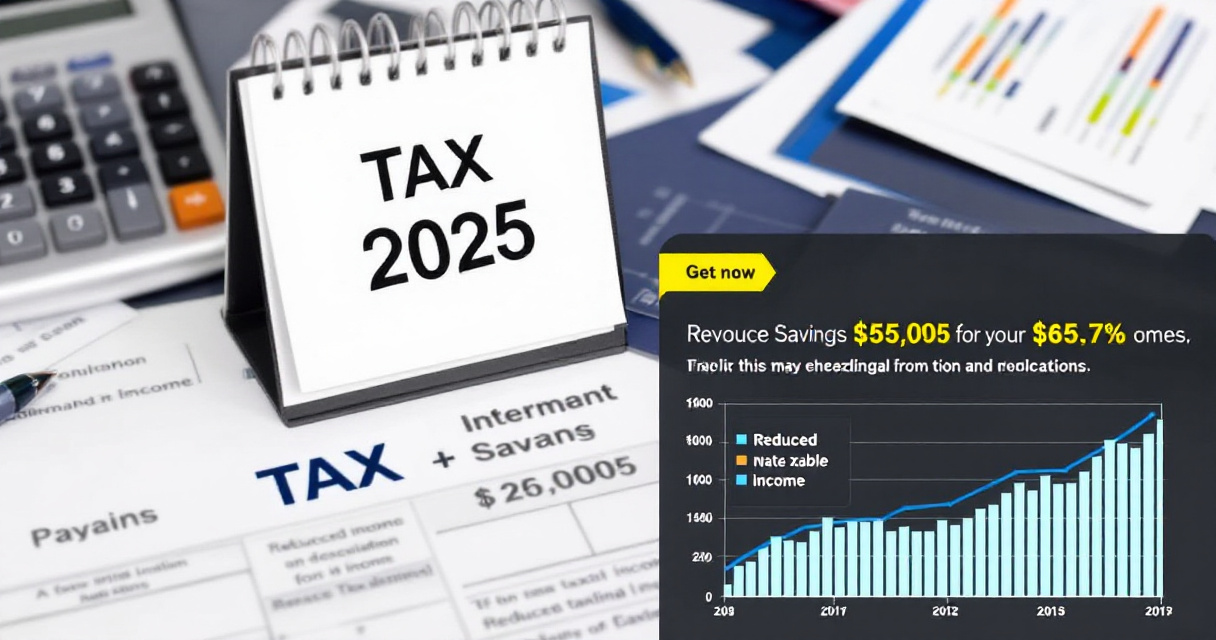Every taxpayer dreams of drastically reducing their taxable income, but many overlook crucial opportunities. Let’s dive into strategies designed to significantly lower your taxable income for 2025.
How to Reduce Taxable Income in 2025 Without Overthinking It
Utilize expanded deductions, leverage IRA contributions, optimize charitable giving, employ the Augusta Rule, and plan tax harvesting for substantial savings in 2025.
Maximize Your Standard Deductions
The IRS has notably increased standard deductions for 2025, offering a strategic opportunity to reduce taxable income.
- Individuals: Deduct up to $14,600.
- Married filing jointly: Deduct up to $29,200.
How to Optimize:
Adjust your withholding to match new rates and consider itemizing only if exceeding these amounts.
Amplify Your Retirement Contributions
Retirement contributions remain a powerhouse for reducing taxable income. Contributing to 401(k) or IRA accounts not only secures your future but also slashes your tax bill.
Example: Jane, earning $120,000, contributes the maximum of $22,500 to her 401(k). That $22,500 immediately lowers her taxable income to $97,500.
Leverage Charitable Contributions
Significant tax advantages can be captured through strategic charitable donations, especially in assets like stocks.
Pro Tip: Donate appreciated stock instead of cash to avoid capital gains while claiming a charitable deduction.
Utilize the Augusta Rule for Big Savings
The Augusta Rule allows homeowners to rent their homes tax-free for up to 14 days annually. This can translate to substantial savings, often exceeding $10K annually.
Common Mistakes to Avoid:
Failing to document the rental transaction accurately. Proper records can safeguard this beneficial deduction.
Tax-Loss Harvesting to Offset Income
Tax-loss harvesting involves selling investments at a loss to offset gains realized throughout the year. This strategy minimizes taxable income effectively.
Red Flag Alert: Beware of the wash sale rule—reinvesting in a substantially similar asset within 30 days nullifies the offset.
Here’s How to Reduce Taxable Income in 2025 Before It’s Too Late
Don’t wait—maximizing these opportunities requires proactive planning. Our team can streamline this process, ensuring maximum deductions and minimum stress.
👉 [Click here to read the next article]
👉 Book your tax strategy session to uncover thousands in potential savings now!
Frequently Asked Questions (FAQ):
1. How much can I deduct with the new standard deduction in 2025?
The IRS increased standard deductions for 2025:
$14,600 for individuals
$29,200 for married couples filing jointly
2. Should I still itemize deductions?
Only if your itemized deductions exceed the standard deduction. For most people, the new higher standard deduction makes itemizing unnecessary.
3. What’s the maximum I can contribute to my 401(k) or IRA in 2025?
For 2025, the max 401(k) contribution is $22,500 (or more if you’re over 50). IRA contribution limits are $7,000, or $8,000 if you’re 50+. These amounts lower your taxable income dollar-for-dollar.
4. How does donating stock reduce my tax bill?
When you donate appreciated stock directly to a charity, you avoid capital gains tax and can deduct the full market value of the stock — giving you a double tax benefit.
5. What’s a common mistake people make with the Augusta Rule?
Poor documentation. You must have a rental agreement, market-rate proof, and a meeting agenda (if rented to your business). Treat it like a real rental.
6. What is tax-loss harvesting?
It’s a strategy where you sell investments at a loss to offset capital gains. It can reduce your taxable income if done right, but watch out for the wash sale rule, which can disqualify the loss if you rebuy the same asset too soon.
7. Can I use all of these strategies at once?
Yes — and combining them often leads to thousands in savings. Just make sure you’re eligible and that you document everything correctly. A tax professional can help you stack strategies the smart way.
8. Can your team help me implement these strategies?
Absolutely. We specialize in helping business owners and individuals uncover hidden tax savings using proven strategies like the ones listed above.


